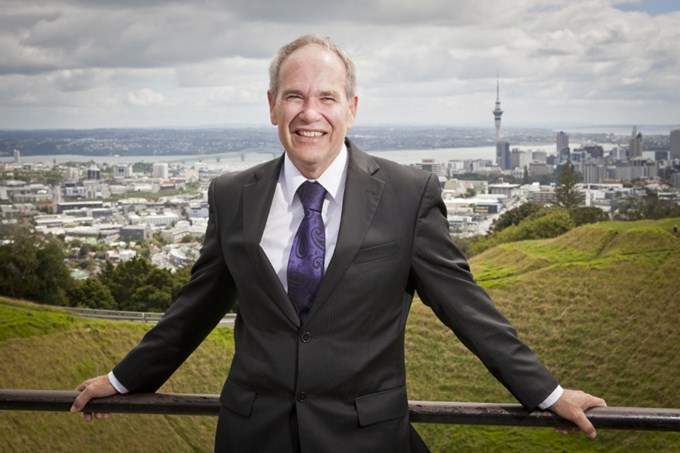You may be surprised to know how long there has been speculation on when or if Auckland will get an underground train system. As is widely known, Mayor Sir Dove-Myer Robinson's rapid-rail proposal in the 1970s got axed but his wasn’t the first.
It actually goes back almost a hundred years in Auckland’s history. In 1923, then Railways Minister Gordon Coates gave his support for a city-to-Morningside underground rail line.
Reading through old files of this newspaper and its then rival, The Auckland Star, over the holiday break, I was intrigued at how many times the same arguments for and against have been aired and which sadly resulted in missed opportunities.
Work on City Rail Link is underway
A few days before Christmas, I spoke at an iwi blessing for the start of work in Albert Street, signalling the start of the City Rail Link against that history of missed opportunities. It was a hugely moving occasion.
The City Rail Link is not just a transport story. It’s also about growing business and creating jobs as well as promoting environmental sustainability. The economic growth that will result will occur well beyond the central city.
I have championed this project since my first Auckland Council mayoral campaign because it will be transformational, not only to keep Auckland moving but also to boost the city’s economic and social life. It will rejuvenate many parts of wider Auckland as well as building a great heart for the city.
It is estimated about 120 premature deaths occur in Auckland each year due to air pollution. Vehicles are also the largest contributor to Auckland’s greenhouse gas (GHG) emissions making up more than a third of the region’s total.
Rail will help air quality
The rail link will move more people out of their cars and into public transport resulting in cleaner air and water as well as promoting a more active lifestyle. The move from diesel to electric trains has already reduced our CO2 emissions by one per cent.
Auckland's city centre is New Zealand’s largest, fastest-growing and most productive employment precinct. Its focus is the fastest growing part of our economy, the service sector - quality professional services, quality hospitality and quality retail. The service sector is people-intensive so its growth means we need to move increasing numbers of people into and out of the city centre every day.
The number of people travelling to and from the city centre by car has been static for more than 15 years and now 52 per cent of people commute to the city by public transport. The fact is, car commutes at peak times have long since hit saturation on the arterial roads feeding the CBD.
Public transport and walking and cycling are the only way to build the city workforce.
Some people suggest the way we should respond to this is by spreading the growth, and traffic out to other parts of Auckland. This has been the failed plan for the past 60 years. There is certainly plenty of growth to go around and it is already being experienced in major metropolitan centres across Auckland.
CBD growing, along with economy
Over the past two years, Auckland’s economy is growing at an extra $3 billion a year adding about 35,000 new jobs per annum. Concentrating certain types of employment in the city centre, however, is critical to maximising its economic value to all of Auckland.
The private sector is planning and constructing new office developments able to accommodate 22,000 employees in the city centre over the next six years.
Great research has been done into urban economies over the past decade. One major finding is that whenever you increase the number of workers in an area, the productivity of individual workers goes up. This means that if you increase the number of workers by a certain percentage, you increase economic output by more than that percentage. This is because larger centres enable more specialisation and more interaction between people and firms.
So providing for job growth in Auckland's city centre is critical to Auckland's economic future. Public transport is the only way we can deliver the necessary workforce to the CBD.
CRL will increase Britomart capacity
Britomart station will hit train handling capacity this year. It can handle only 20 trains an hour. The CRL allows us to increase this to 48 trains an hour. Building the rail tunnel will also divert more than enough passengers to the new Aotea Station to give Britomart enough capacity to handle decades of growth.
To reach my vision of Auckland being the world’s most liveable city, we need this to happen and I expect it will soon get the needed additional financial support from the government.
So while we all know transport and housing are the city’s biggest challenges, the issue dominating everything is that Auckland is on a roll and we are growing fast. In fact our population is growing at three percent a year or more than 800 new people a week and immigrants are continuing to decide that Auckland is their destination of choice.
The CRL is the heart of dealing with the growth, with propelling our economy, and creating a future Aucklanders want.


